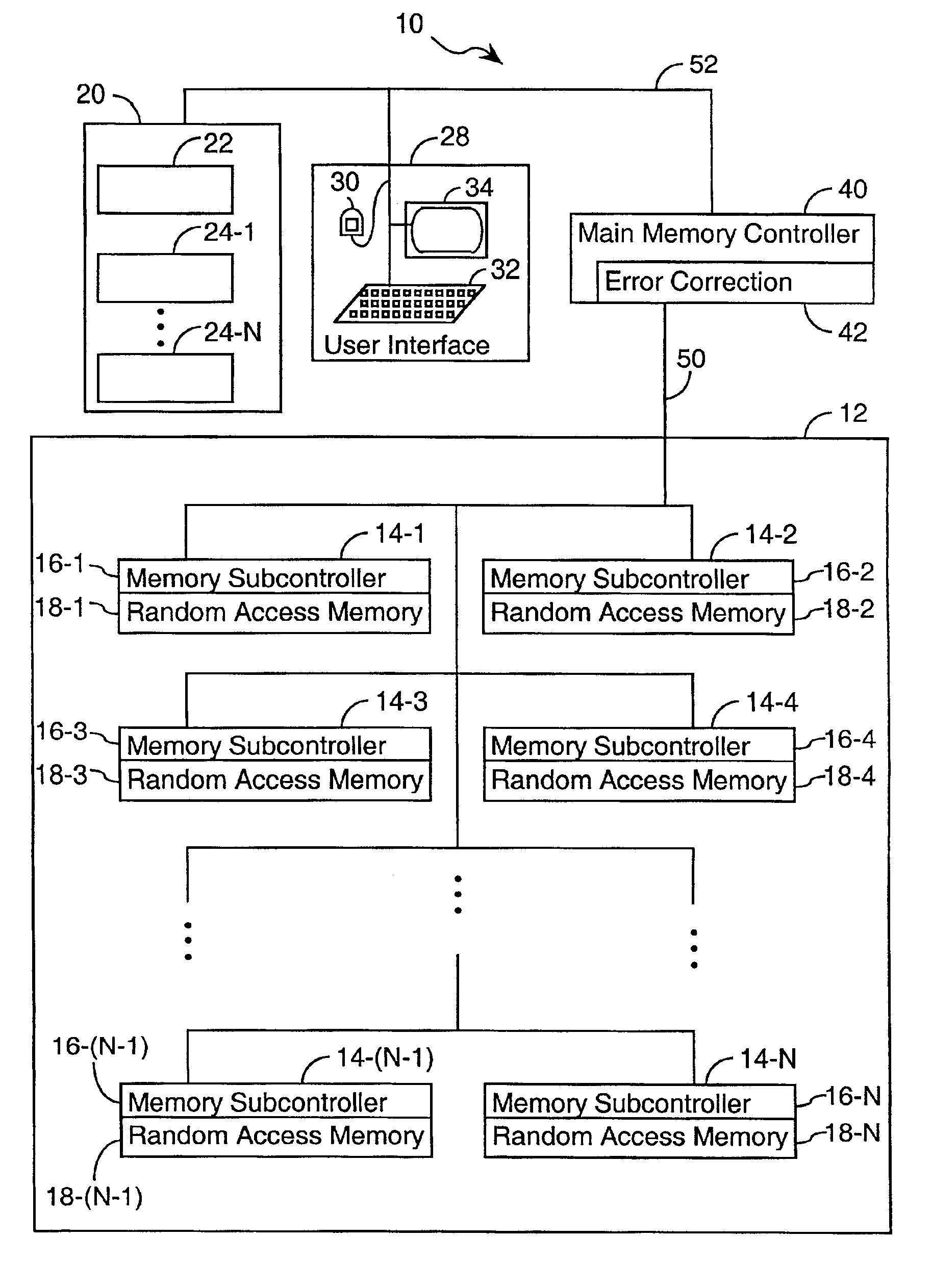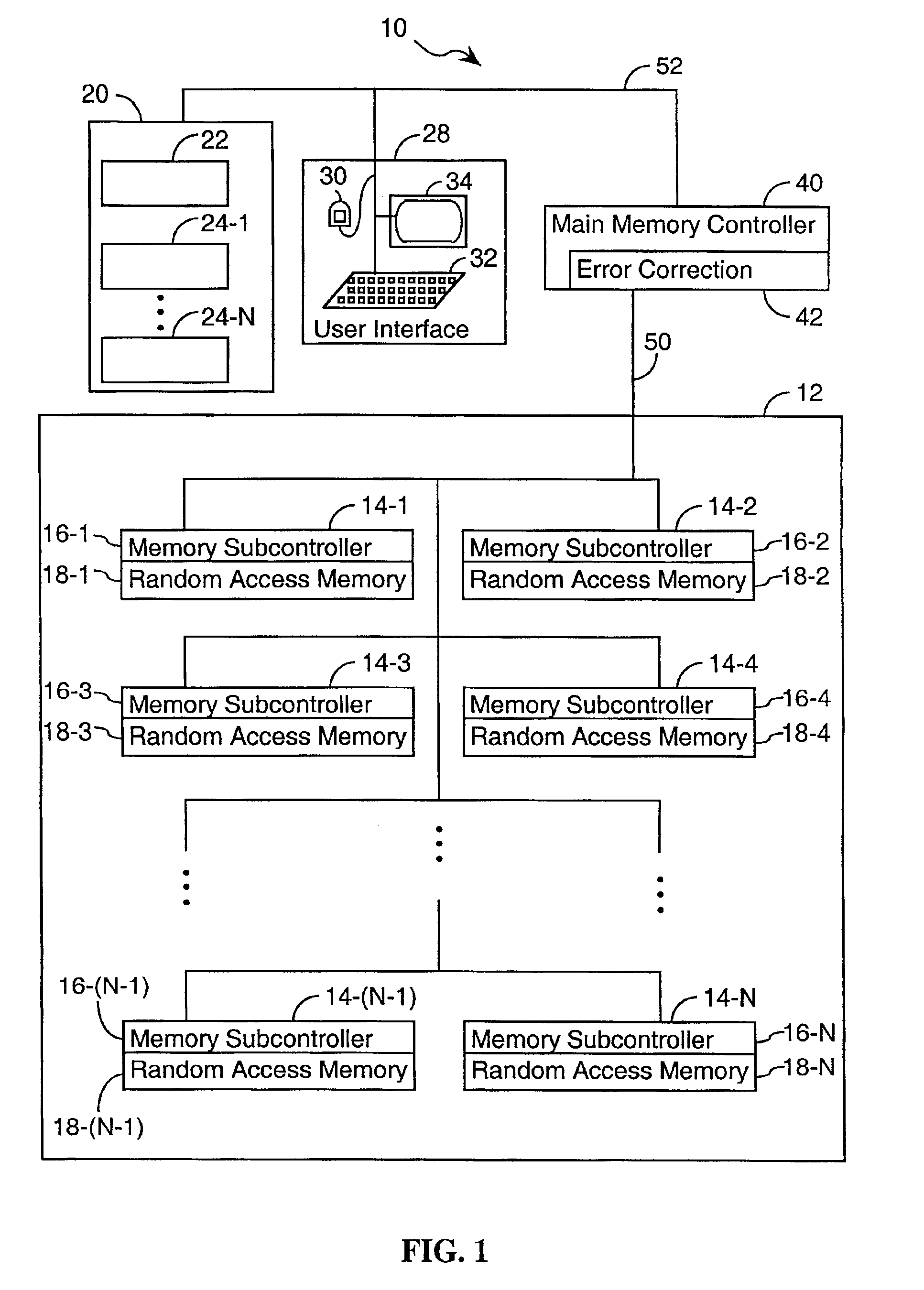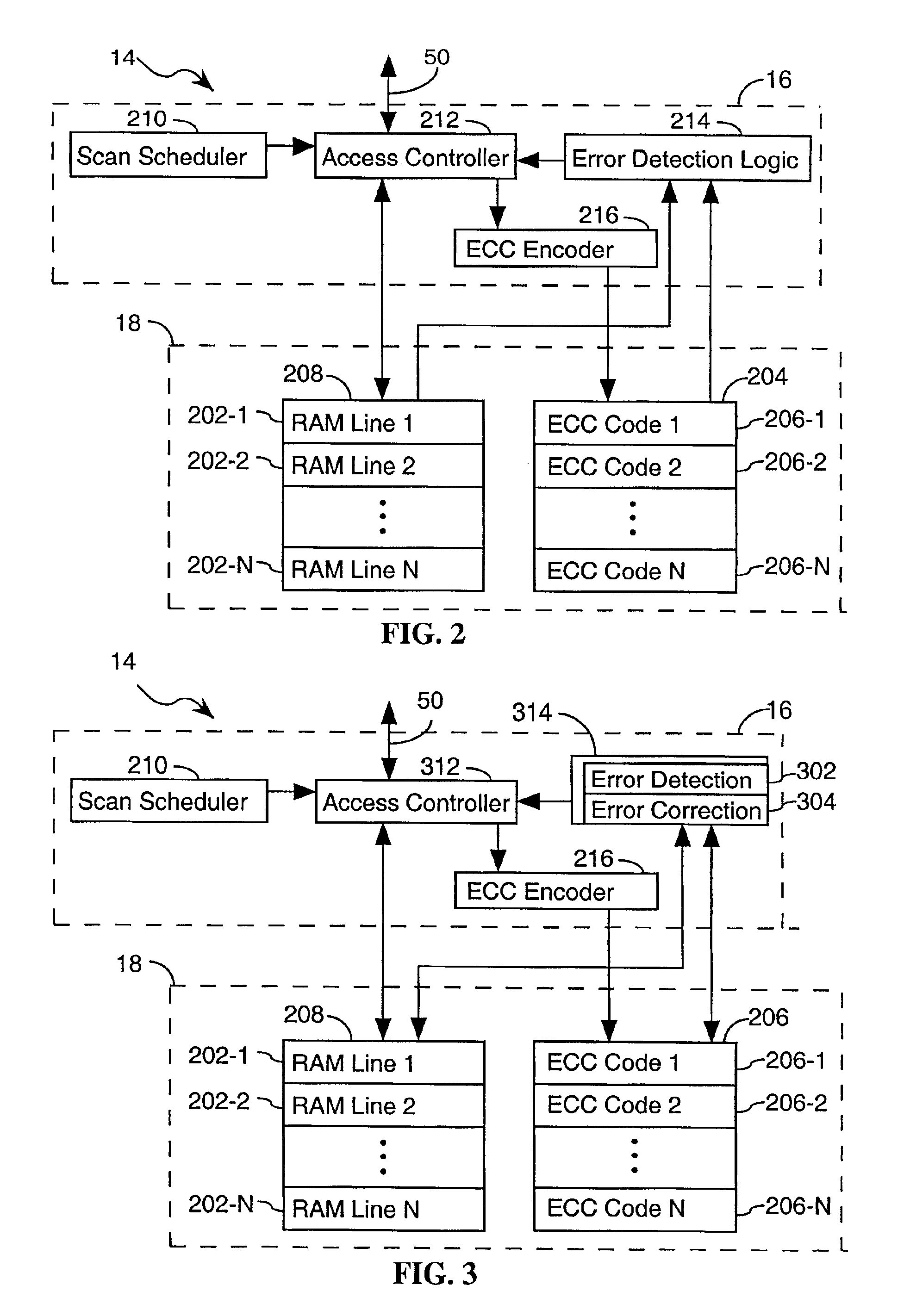System and method for scrubbing errors in very large memories
a memory and error technology, applied in the field of system and method for scrubbing errors in very large memories, can solve the problems of infrequent errors, further corruption of already corrupted values, and inability to detect errors, so as to improve memory scrubbing techniques, increase the effective scan rate, and improve the effect of memory scrubbing
- Summary
- Abstract
- Description
- Claims
- Application Information
AI Technical Summary
Benefits of technology
Problems solved by technology
Method used
Image
Examples
Embodiment Construction
FIG. 1 illustrates an improved system 10 for providing adequate scan rates to large memory systems in accordance with one embodiment of the present invention. System 10 includes a memory 12 that is divided into several memory modules 14 that are each coupled to a memory bus 50. Each memory module 14 includes a memory subcontroller 16 and a memory array 18. Memory array 18 is typically random access memory (RAM). Each subcontroller 16 has the responsibility for scanning its own RAM 18 to detect corrupt bits and to perform this task independently of the other subcontrollers 16. System 10 includes a central processing unit (CPU) 20 that includes a processor core 22, and an optional hierarchy of N levels of cache memory 24-1 to 24-N. System 10 also includes a user interface 28. In some embodiments user interface 28 includes a mouse 30, keyboard 32, and / or display 34. System 10 includes a main memory controller 40 for controlling memory 12. In some embodiments of the present invention, m...
PUM
 Login to View More
Login to View More Abstract
Description
Claims
Application Information
 Login to View More
Login to View More - R&D
- Intellectual Property
- Life Sciences
- Materials
- Tech Scout
- Unparalleled Data Quality
- Higher Quality Content
- 60% Fewer Hallucinations
Browse by: Latest US Patents, China's latest patents, Technical Efficacy Thesaurus, Application Domain, Technology Topic, Popular Technical Reports.
© 2025 PatSnap. All rights reserved.Legal|Privacy policy|Modern Slavery Act Transparency Statement|Sitemap|About US| Contact US: help@patsnap.com



